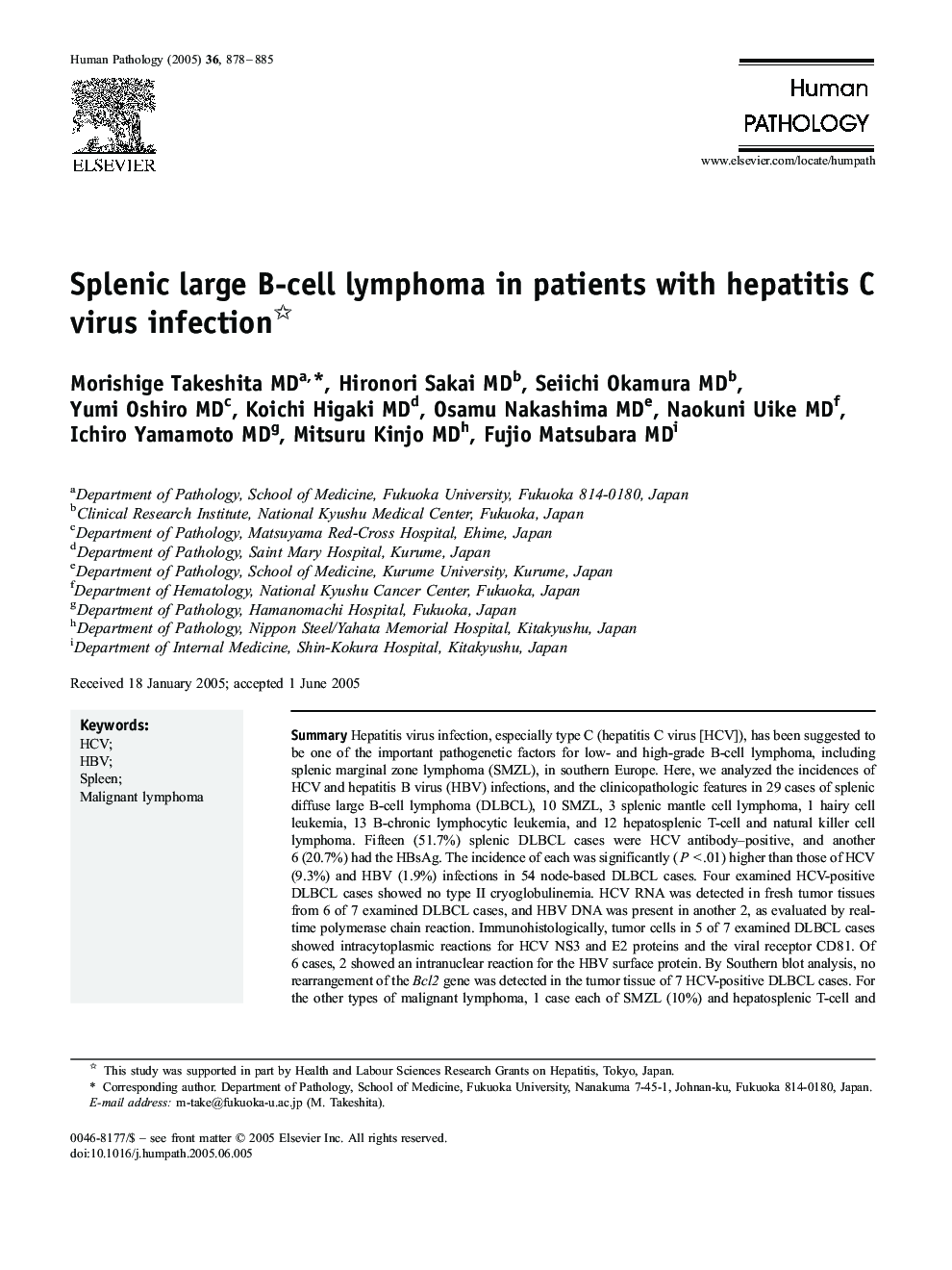| Article ID | Journal | Published Year | Pages | File Type |
|---|---|---|---|---|
| 9365557 | Human Pathology | 2005 | 8 Pages |
Abstract
Hepatitis virus infection, especially type C (hepatitis C virus [HCV]), has been suggested to be one of the important pathogenetic factors for low- and high-grade B-cell lymphoma, including splenic marginal zone lymphoma (SMZL), in southern Europe. Here, we analyzed the incidences of HCV and hepatitis B virus (HBV) infections, and the clinicopathologic features in 29 cases of splenic diffuse large B-cell lymphoma (DLBCL), 10 SMZL, 3 splenic mantle cell lymphoma, 1 hairy cell leukemia, 13 B-chronic lymphocytic leukemia, and 12 hepatosplenic T-cell and natural killer cell lymphoma. Fifteen (51.7%) splenic DLBCL cases were HCV antibody-positive, and another 6 (20.7%) had the HBsAg. The incidence of each was significantly (P < .01) higher than those of HCV (9.3%) and HBV (1.9%) infections in 54 node-based DLBCL cases. Four examined HCV-positive DLBCL cases showed no type II cryoglobulinemia. HCV RNA was detected in fresh tumor tissues from 6 of 7 examined DLBCL cases, and HBV DNA was present in another 2, as evaluated by real-time polymerase chain reaction. Immunohistologically, tumor cells in 5 of 7 examined DLBCL cases showed intracytoplasmic reactions for HCV NS3 and E2 proteins and the viral receptor CD81. Of 6 cases, 2 showed an intranuclear reaction for the HBV surface protein. By Southern blot analysis, no rearrangement of the Bcl2 gene was detected in the tumor tissue of 7 HCV-positive DLBCL cases. For the other types of malignant lymphoma, 1 case each of SMZL (10%) and hepatosplenic T-cell and natural killer cell lymphoma (8.3%) showed HCV infection. In conclusion, persistent human hepatitis virus infections, especially HCV, may play an important role in the tumorigenesis of splenic DLBCL in Japan.
Keywords
Related Topics
Health Sciences
Medicine and Dentistry
Pathology and Medical Technology
Authors
Morishige MD, Hironori MD, Seiichi MD, Yumi MD, Koichi MD, Osamu MD, Naokuni MD, Ichiro MD, Mitsuru MD, Fujio MD,
